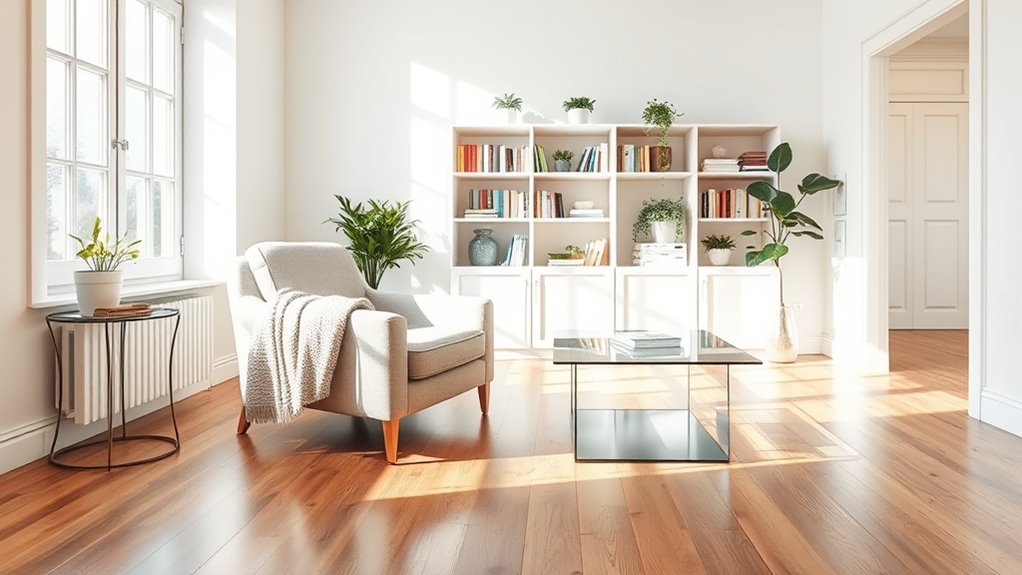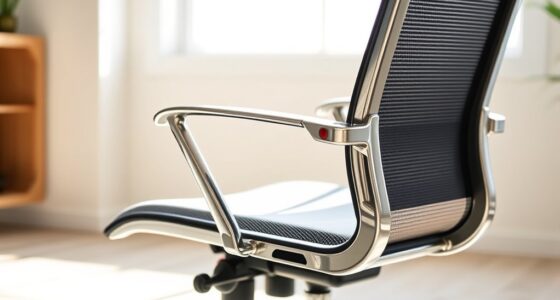If your home is too clean, you might be disrupting the natural balance of beneficial microbes that support your health and comfort. Over-sanitizing and using harsh disinfectants can wipe out helpful microbes, weakening your immune system and reducing microbial diversity. This can make indoor environments less resilient and more allergenic. Keep in mind that maintaining a healthy balance is key—if you want to discover how to create a welcoming, microbiome-friendly space, there’s more to explore.
Key Takeaways
- Excessive cleaning removes beneficial microbes, reducing microbial diversity essential for immune development and overall health.
- Over-sanitizing limits exposure to diverse microorganisms, increasing susceptibility to allergies and autoimmune conditions.
- Using strong disinfectants can kill helpful airborne and surface microbes that contribute to a balanced indoor microbiome.
- Pet dander and indoor plants introduce beneficial microbes, but overly sterile environments diminish these natural microbial sources.
- Maintaining a moderate cleaning routine and natural materials fosters a resilient, diverse microbiome that enhances indoor comfort.
The Science Behind Microbes and Our Living Spaces
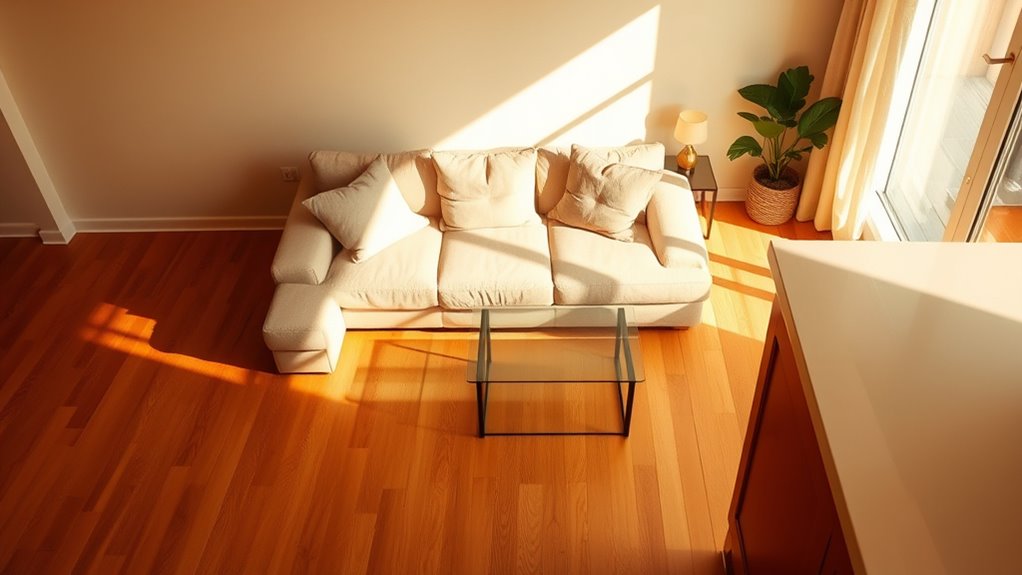
Microbes are everywhere around us, shaping the environment of our living spaces in ways we often overlook. They are part of indoor ecology, constantly interacting with surfaces, air, and even our bodies. Microbial evolution has led to diverse communities that adapt to indoor conditions, thriving in places like kitchens, bathrooms, and bedrooms. These microbes influence the air quality, surface cleanliness, and overall health of your environment. Understanding this dynamic helps you realize that a perfectly sterile home isn’t natural or beneficial. Instead, microbes evolve alongside us, forming complex ecosystems within our homes. Recognizing how microbial evolution impacts indoor ecology can change your perspective on cleanliness, emphasizing balance over eradication. This science reveals the intricate relationship between microbes and the spaces we live in daily, highlighting the importance of microbial diversity for a healthy indoor environment.
The Benefits of a Diverse Microbiome in the Home
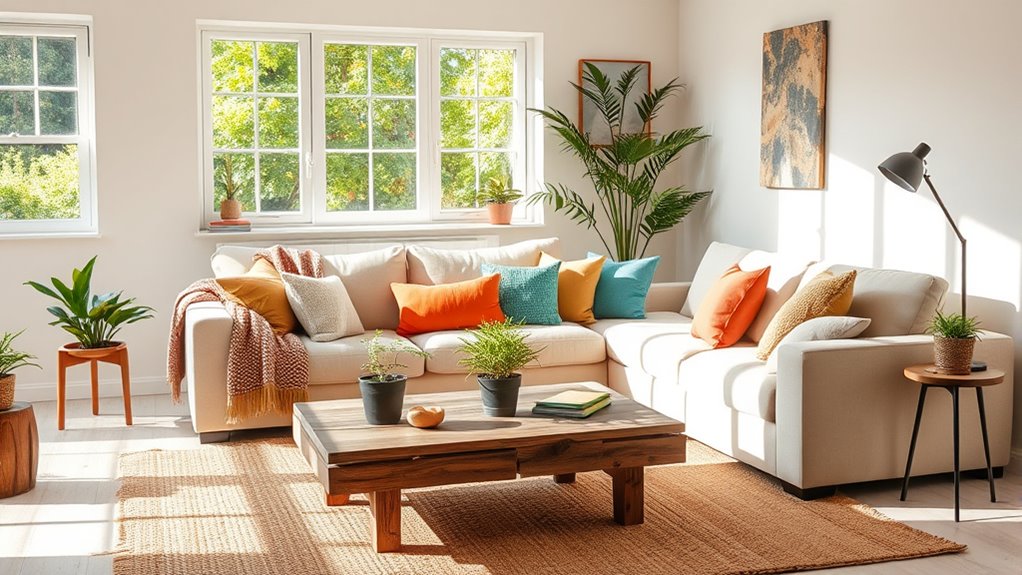
A rich and varied microbiome in your home offers numerous health and environmental benefits. Having indoor plants introduces beneficial microbes that support your immune system and improve air quality. They act as natural reservoirs for diverse microorganisms, promoting microbial balance. Pet dander, often viewed negatively, actually contributes to microbial diversity by exposing you to a wider range of microbes. This exposure helps strengthen your immune defenses and reduces allergy risks over time. A diverse microbiome can also inhibit harmful pathogens by competing for resources. Additionally, research into the immune-boosting properties of CBD highlights how exposure to diverse microbes can support overall health. Overall, maintaining microbial variety creates a healthier, more resilient environment. Instead of aspiring for sterile perfection, fostering microbial diversity through plants and accepting pet dander helps your home become a balanced ecosystem that benefits everyone inside.
How Over-Sanitizing Can Disrupt Microbial Balance
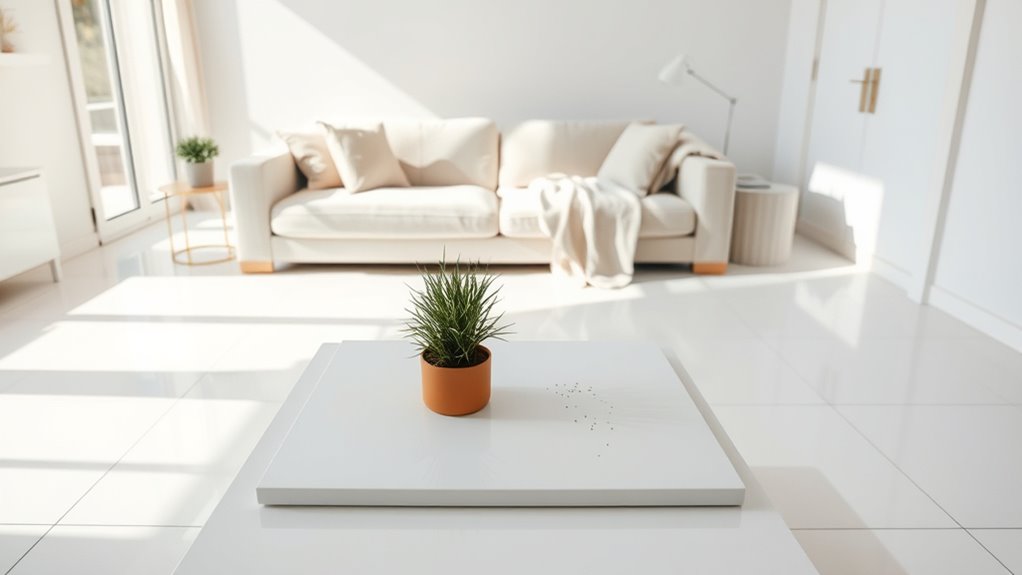
When you over-sanitize, you remove beneficial microbes that keep your environment balanced. This loss of microbial diversity can weaken your immune system and make you more vulnerable to illnesses. By understanding this, you can better protect your health without disrupting your natural microbial community. Additionally, maintaining a healthy microbiome is essential for overall well-being and resilience against diseases.
Microbial Diversity Loss
Over-sanitizing environments can unintentionally disrupt the delicate balance of your microbiome, leading to a significant loss of microbial diversity. When you rely heavily on disinfectants, you reduce the variety of microbes that naturally thrive in your home. Poor air quality, caused by excessive cleaning chemicals, can further diminish beneficial airborne microbes. Additionally, aggressive pest control methods often eliminate not just pests but also the helpful microorganisms that coexist with them. This reduction in microbial diversity weakens the ecosystem within your home, making it less resilient to harmful pathogens. A diverse microbiome supports a healthier environment, so over-sanitizing can backfire by stripping away the microbial variety that helps maintain overall home health and balance. Incorporating natural materials like wood, stone, and linen can also promote a richer microbial environment, supporting overall microbiome diversity.
Immune System Impact
Although disinfecting your environment can seem beneficial, excessive cleaning can actually weaken your immune system by disrupting its natural microbial balance. When you eliminate indoor allergens and pet dander too aggressively, you reduce exposure to the microbes that help train your immune responses. Without these microbial interactions, your immune system may become hyper-reactive, increasing the risk of allergies and autoimmune conditions. Over-sanitizing prevents your body from developing tolerance to common triggers, making you more sensitive to everyday allergens. Incorporating microbial diversity into daily life can bolster your immune resilience and reduce hypersensitivity. Instead of endeavoring for sterilization, aim for a balanced approach that allows beneficial microbes to coexist, helping your immune system stay resilient and better equipped to handle environmental challenges.
Common Household Practices That Reduce Microbial Diversity
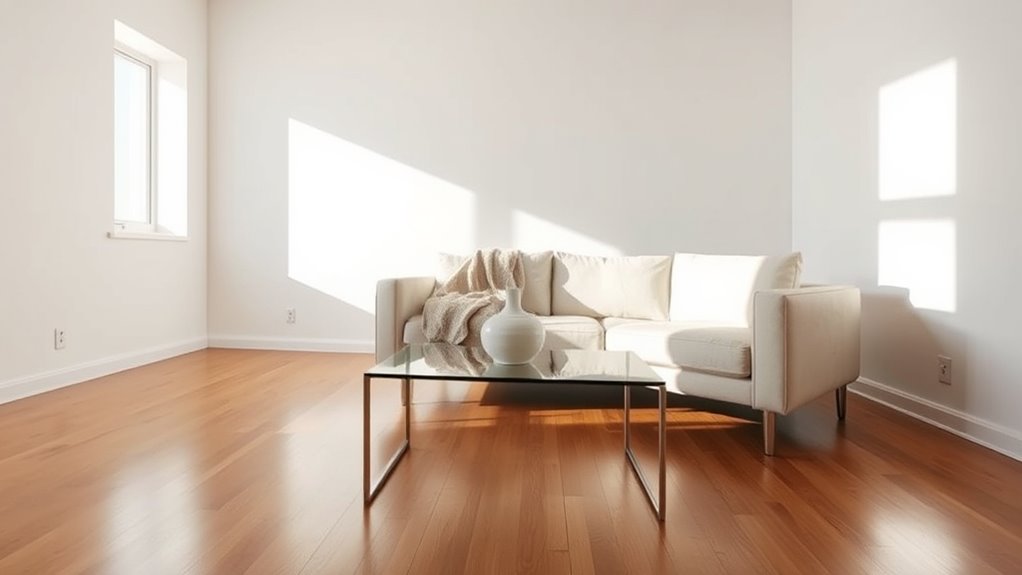
Many common household practices inadvertently decrease microbial diversity, which can impact overall microbial balance and resilience. Frequent use of air purification systems removes not only pollutants but also beneficial microbes, reducing exposure. Pet allergens can foster a more diverse microbiome, yet strict cleaning minimizes this benefit. Over-sanitizing surfaces kills microbes that naturally support microbial variety. Additionally, relying heavily on antimicrobial products can further diminish microbial diversity, potentially weakening the body’s natural defenses.
Striking the Right Balance: Cleanliness vs. Microbial Exposure
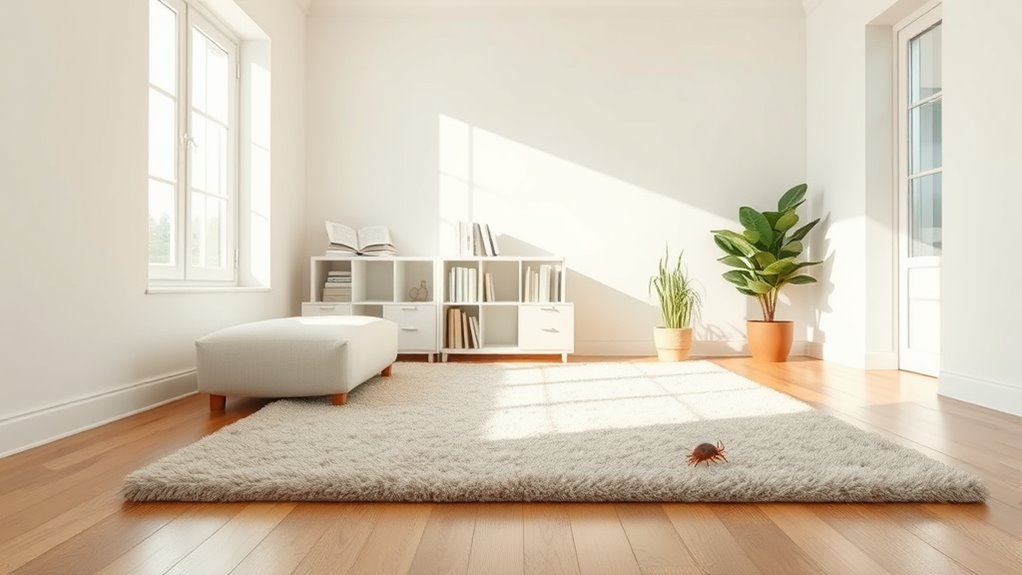
Finding the right balance between cleanliness and microbial exposure is essential for maintaining a healthy home environment. If you clean too often, you might reduce beneficial microbes, impacting your home’s microbiome and air quality. Conversely, infrequent cleaning can lead to mold, dust, and bacteria buildup, compromising air quality and potentially affecting your health. Adjusting your cleaning frequency based on your household’s needs helps preserve microbial diversity while keeping harmful pathogens at bay. For example, regular but not excessive cleaning of high-touch surfaces supports a healthy balance. Ventilation also plays a key role in maintaining air quality, helping to remove airborne microbes and pollutants. Incorporating sustainable building materials and smart technology can further optimize your home’s environment, promoting healthier living conditions. Striking this equilibrium ensures your home remains a comfortable, healthy space where microbial life supports your well-being.
Practical Tips for Maintaining a Healthy Home Microbiome
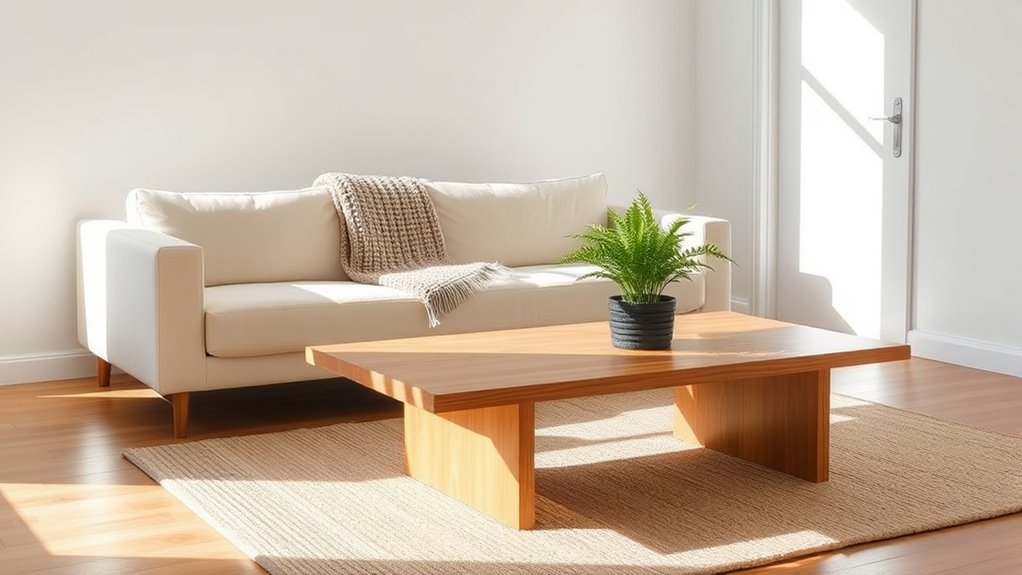
Maintaining a healthy home microbiome requires practical strategies that balance cleanliness with preserving beneficial microbes. Start by choosing eco-friendly cleaning products that clean effectively without stripping away helpful microbes. Regularly cleaning surfaces is important, but avoid over-sanitizing, which can harm the microbial diversity. Incorporate indoor plants into your space; they naturally introduce beneficial microbes and improve air quality. When watering plants, use natural, chemical-free soil to support microbial life. Ventilate your home regularly to reduce mold and moisture buildup that can disrupt microbial balance. Additionally, limiting the use of harsh disinfectants and focusing on cleaning high-touch areas can help maintain microbial diversity. By combining eco friendly cleaning methods with the presence of indoor plants, you foster a resilient, healthy home microbiome that supports your overall well-being. Dog names can even inspire you to create a welcoming environment, as pet-friendly spaces often share a diverse microbiome.
Frequently Asked Questions
How Do Different Cleaning Products Affect Microbial Diversity?
Different cleaning products, especially those with antimicrobial effects, can reduce microbial diversity in your home. Frequent cleaning with strong disinfectants kills beneficial microbes, decreasing overall microbial variety. While cleaning frequency helps maintain hygiene, overdoing it can strip away helpful bacteria, potentially impacting your health. Using gentler, less antimicrobial products allows you to clean effectively without disrupting your home’s microbiome, promoting a healthier environment and better immune resilience.
Can Pets Help Improve Your Home’s Microbiome?
While pet allergies often scare you away, having pets actually helps improve your home’s microbiome. Pet microbial transmission introduces diverse microorganisms, strengthening your immune system and reducing allergies over time. Instead of a sterile environment, a balanced mix of microbes offers comfort and health benefits. So, your furry friend isn’t just a companion—it’s a natural way to diversify your home’s microbiome, making it more resilient and healthier for everyone.
Is There an Ideal Level of Cleanliness for Optimal Health?
You should aim for a balance in hygiene that promotes microbial diversity, which is key to ideal health. Being too clean can reduce beneficial microbes, weakening your immune system, while too little cleanliness can increase harmful bacteria. Focus on moderate cleaning practices, like regular handwashing and cleaning high-touch surfaces, to support a healthy microbiome. Striking this balance helps your body develop resilience and maintain overall wellness.
How Does Humidity Influence Microbial Populations Indoors?
Humidity levels shape indoor microbial life, balancing comfort and health. Too high, and indoor mold thrives, risking allergies and respiratory issues; too low, and beneficial microbes diminish, weakening your microbiome. By controlling humidity, you regulate microbial populations, fostering a healthier environment. Proper humidity control curbs mold growth and supports diverse microbial communities, ensuring your home remains a safe, comfortable space rather than a breeding ground for harmful microbes.
Are There Specific Areas in the Home That Benefit From Microbial Exposure?
You benefit from microbial exposure in areas like your bathroom and kitchen, where dust mites and mold growth are common. These microbes can strengthen your immune system and promote overall health. By allowing some natural microbial presence, you help maintain a balanced microbiome. Avoid excessive cleaning in these spaces, and let beneficial microbes coexist, reducing the risk of allergies and illnesses caused by overly sterile environments.
Conclusion
So, next time you’re scrubbing every surface, remember that a little dirt actually benefits your health. Embracing microbial diversity isn’t about abandoning cleanliness but finding balance. Studies suggest that over-sanitizing can weaken your immune system and reduce beneficial microbes. Instead, focus on practical, moderate cleaning habits. By doing so, you create a home that’s not just spotless but also teeming with healthy microbes—supporting your well-being in ways you might not have expected.
